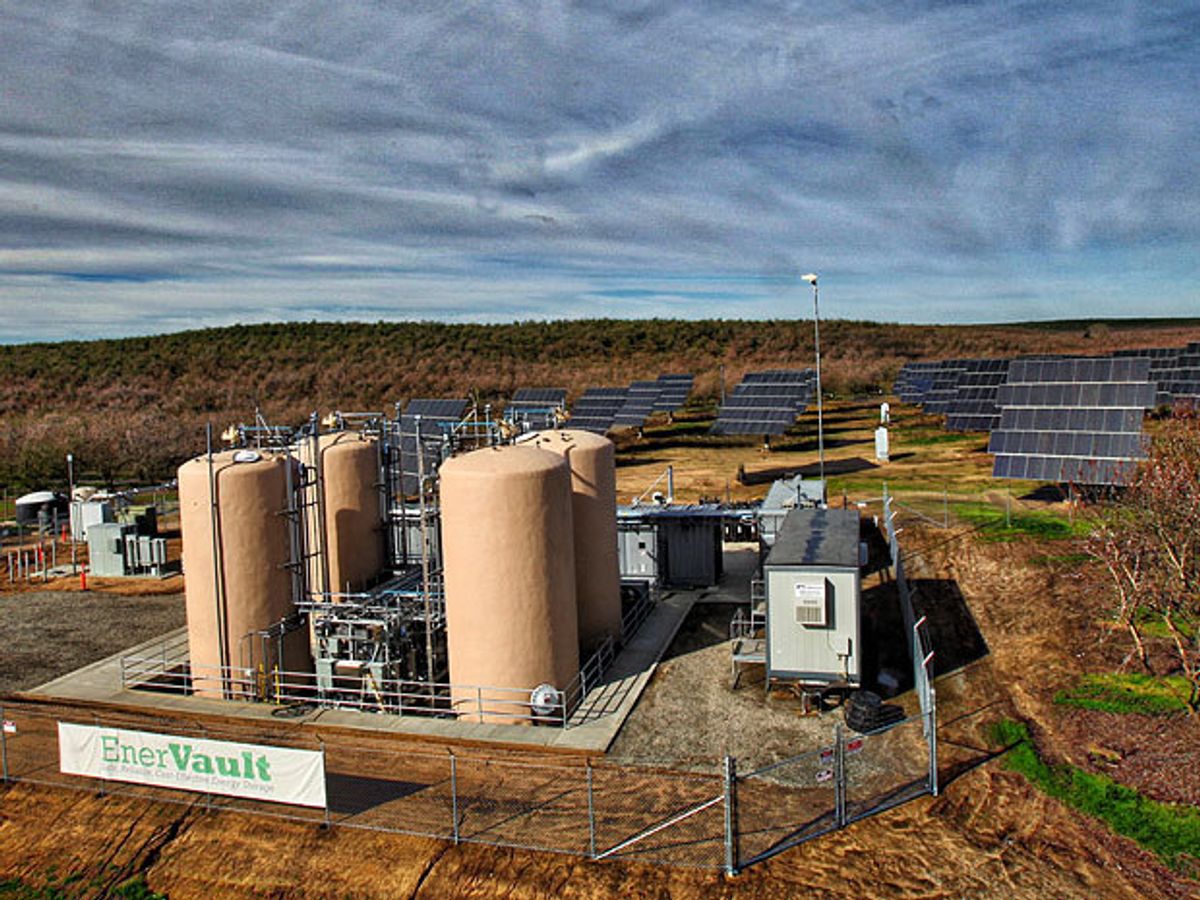The four round structures pictured above may look like grain silos but they're actually giant flow batteries. They're part of a demonstration plant going online this week, and proponents say it could represent the future of long-duration energy storage on the electric grid.
Startup EnerVault will unveil tomorrow what it says is the largest iron-chromium flow battery ever made. Installed in Turlock, Calif., the four-hour, 250-kilowatt battery will be charged by a solar array and power an irrigation system. The project was funded by about US $5 million from Department of Energy through the stimulus program and the California Energy Commission.
If this technology demonstration performs well, it will be a step towards much larger flow batteries that could replace natural gas plants or provide round-the-clock power from wind and solar farms.
Flow batteries store and release energy by circulating two electrolyte solutions through a cell (conventional batteries typically use two solid electrodes). Like other batteries, a chemical reaction takes place across a membrane to produce a flow of current. To reverse the reaction in a flow battery, the electrolytes flow in the opposite direction.
One of the advantages of a flow battery is that the energy capacity can be expanded by installing larger tanks of the active material. Also, flow batteries are relatively inexpensive per kilowatt-hour compared to lithium-ion batteries and can provide power for multiple hours. There are already several commercial-scale vanadium or zinc-bromine flow batteries operating around the world.
EnerVault chose to pursue an iron-chromium chemistry because both materials are abundant and low-cost, says CEO Jim Pape. The company projects it can deliver energy for utilities and other users at a cost of less than $250 per kilowatt hour. At that price, energy storage becomes competitive with natural gas plants that provide power at peak hours, he says.
Using iron and chromium electrolytes required developing a novel mechanical system for flowing the materials through the battery’s cells. The batteries have a series of stacked cells, with each one optimized for the state of charge of the electrolytes flowing through them, says chief technology officer Ronald Mosso.
One challenge with existing flow battery technologies is that the membrane between both sides of a cell can degrade and may need to be replaced. EnerVault’s design allows it to use more durable and lower-cost separators. "You can charge and discharge indefinitely—there's no change in the chemical structure," Mosso says. The water-based electrolyte is slightly acidic but not harmful to people's skin from a brief exposure.
For utilities, having reliable and cheap long-duration energy storage can change how they operate the grid. A multi-hour battery could replace a fossil fuel plant that only operates during peak-demand hours. A battery could also add capacity to a substation that struggles to meet supply during hot summer days when the air conditioning load stresses local grids. And batteries could provide back-up power in case of an outage. Other technologies proposed for multi-hour energy storage include liquid metal batteries and mechanical storage devices.
By 2015, EnerVault expects to have multi-megawatt commercial systems installed. In four or five years, it hopes to have 20 megawatt or 50 megawatt-size batteries taking the place of natural gas "peaker plants," says Pape. The tanks that hold electrolyte solution can be very large but the footprint is comparable to conventional power generation equipment, he says.
Some early flow battery installations have encountered reliability problems as manufacturers scaled from kilowatt-hour-size prototypes to megawatt-hour-size commercial systems, analysts say. So this installation in California will provide valuable performance data on how this approach to flow batteries fares at large scale.




